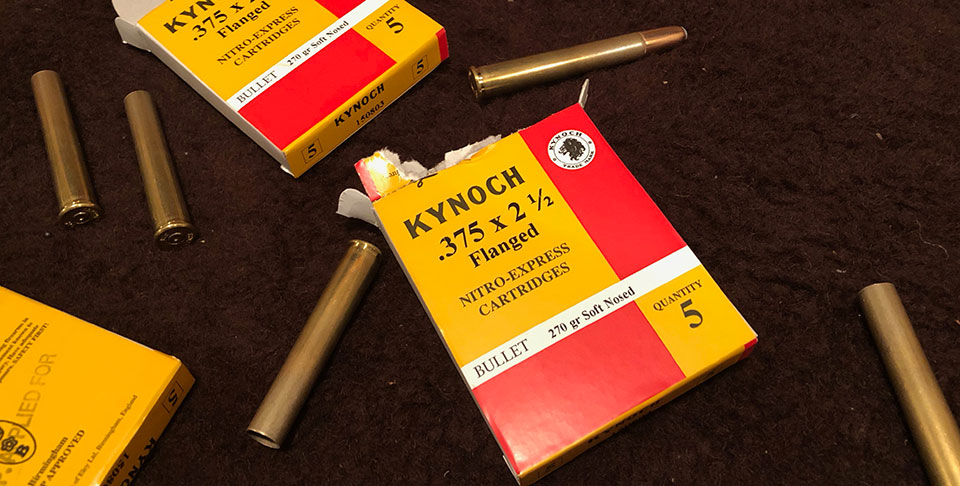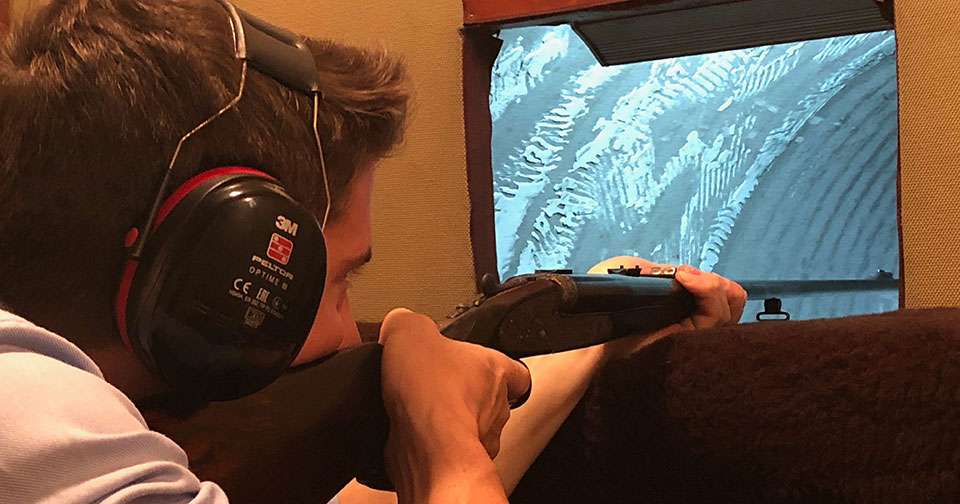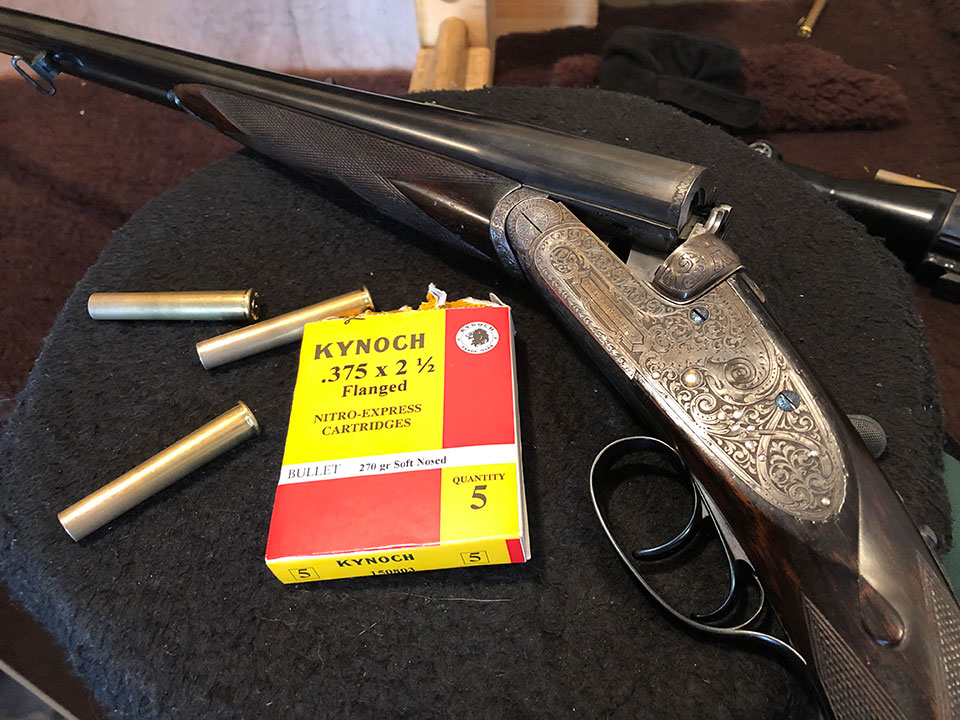Tody's subject is a a Holland & Holland rifle in .375 Flanged that a client bought at Gavin Gardiner’s auction in May. It is a lovely looking rifle and would be a treat to use on a monteria or for driven boar but it was purchased under a misapprehension. The buyer thought he was bidding on a .375 Flanged Magnum, which is a dangerous game cartridge, not a .375 Flanged, which is really suited to medium game only.
With the rifle delivered, an inspection exposed a few age-related areas of wear, the barrels were a fraction off-face, there were some small settling cracks in the wood, under the locks, dry firing had caused a striker to get a little bent and the chequer was re-cut a little sharp but, overall it needed just some minor tweaks and a service. Just what you would expect from a gun out of auction.
However, with a double rifle, the visual inspection is just the start. Two barrels throwing bullets towards the same point of aim pose challenges to the gunmaker and represent a risk to the buyer of a secondhand rife. Until you fire it at a target, you have no idea what level of accuracy it delivers. If it is not accurate, it will need regulating, which is a messy, time-consuming and expensive business.
The only reliable way to establish the facts is by getting to a properly set-up range and testing it in controlled conditions. To do that, you need a range and you need ammunition. I made a call to Kynamco to see if they had .375 Flanged in stock. They did. So, I ordered 100 rounds, at close to six pounds each, and had them delivered to Westley Richards.
Westley Richards are in Pritchett Street, in Birmingham, and when they moved from the old factory a few years ago and renovated their current premises, they made sure to build a fifty-yard, enclosed rife range at the top end of the car park. It is fully enclosed, effectively underground, with all the right lighting, ventilation and extraction equipment necessary.
At one end is a board for the mounting of paper targets, at the other a shooting platform with a rest from which heavy rifles can be regulated. A cradle is often used for regulating new rifles, as it absorbs the punishing recoil and holds the rifle very steady but that grip can put a strain on old wood, so it is often dispensed with when testing older rifles, just in case the stock cracks under the recoil.
The .375 is not a super-powerful cartridge, being, essentially, a necked-up .303 with a 270 grain soft-nosed bullet. Test firing from a standing position is viable; far more so than would be the case with a stopping rifle, like a .577 or a .470.
Gun Room Manager Ricky and I took the Holland & Holland to the range and started firing test groups from right and left barrels in turn. The rifle itself performed well, with no mis-fires or mechanical problems. However, the groups, though reasonably well placed, were not quite what we were hoping for.
One of the problems was the very fine blade front sight. Against a target at fifty yards, it was very hard to see. We tried black targets, black targets with an orange centre and black circles with white centres. The orange centre was the best but it was very hard to draw a regular bead and be sure that point of aim was the same each time.
We fired twenty rounds at paper and then did some head scratching. It looked like some of the shots were putting two bullets almost through the same holes. Not in itself bad at all; but a little suspicious.
When we counted back through the holes and the empty cases, we found the same number of holes as cases, if we counted the ‘double’ hits as one. So, it was not two shots in the same hole it was something else. We fired six more shots at a clean target, checking each one in turn.
It became apparent the right barrel was ‘key-holing’. The bullet’s trajectory was not stabilising and it was entering the paper side-on, rather than nose-on. There are several areas to explore when this happens. It may be that the bore has been enlarged and the bullet is not fitting properly and getting spin from the lands. Cutting the muzzle and re-profiling the exit point can help too, but it is basically experimentation, which is time consuming and costly, with no guarantee of success.
So, what does one do in these circumstances? There are two choices, either start pouring money into the rifle and try to get it properly regulated or don’t.
I reminded the client that he had bought the rifle in error and, even if we got it shooting perfectly, he didn’t have a use for it and would be looking to sell it. Every penny he put into in from this point on he would have to try and re-coup at sale, which would be no easy task. The other option was to do what the previous owner had done: put it into an auction and let someone else have a go at it.
Selling a gun at auction that you have just bought at auction is a good way to lose money. You just paid an auctioneer 25%-30% when you bought it and the sale price is less that 25%-30% when someone else buys it. Sometimes you just have to cut your losses.
I packed the Holland & Holland into a case, put it in the car and headed to the Game Fair, where I handed it to an auctioneer for listing in the next sale. In six month’s time some other enthusiast will be wrestling with the same conundrum. This .375 will suit someone and it has the potential to be an excellent hunting rifle but to get it there is an adventure I decided we are best not embarking upon. You have to pick your battles.
Published by Vintage Guns Ltd on



